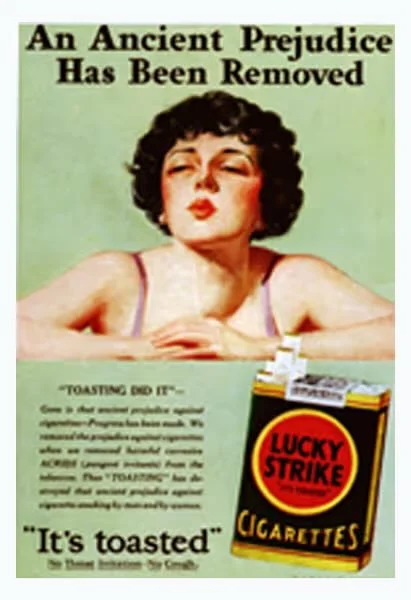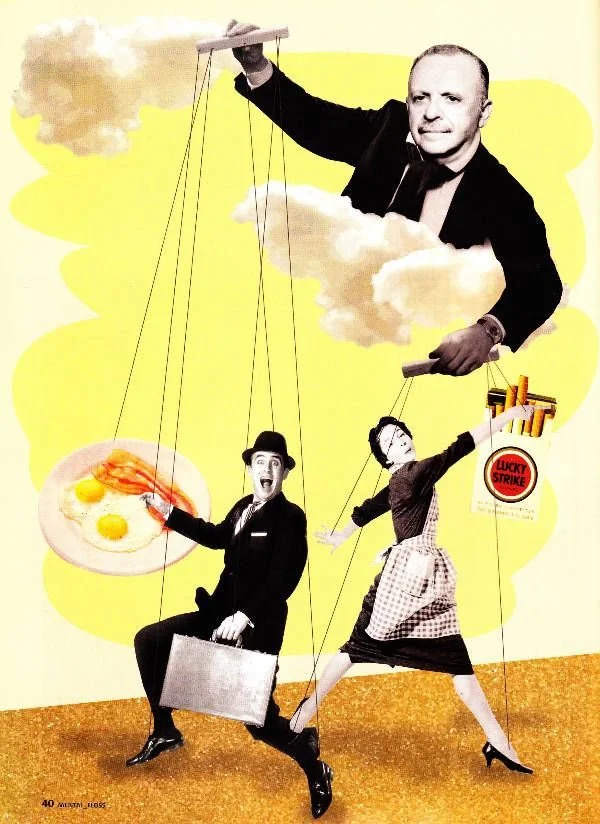Edward Bernays, Propaganda, and the Hidden Architecture of Consumer Desire
In 1928, Edward Bernays, often called the “Father of Public Relations”, published a slim but seismic book called Propaganda. Its subject wasn’t just advertising. It was mind control.
Bernays believed modern society required invisible guidance, a class of people who could shape public opinion, not through force, but through influence. And he didn’t shy away from the moral implications.
“Those who manipulate this unseen mechanism of society constitute an invisible government which is the true ruling power of our country.”
To Bernays, propaganda wasn’t a dirty word. It was a tool, morally neutral, that could be used for good or evil. The same techniques could sell war or peace, democracy or dictatorship, cigarettes or vegetables. The question wasn’t if it would be used, but by whom.
The Leap from Politics to Marketing
Before Bernays, persuasion was largely the domain of politics. He brought it into commerce. His genius was applying psychological principles to everyday products. He didn’t just market features, he marketed meaning.
When he helped the American Tobacco Company get more women smoking in the 1920s, he didn’t talk about taste or quality. He rebranded cigarettes as “Torches of Freedom”, symbols of independence and equality. He staged a parade of women smoking in public, then let the media do the rest.
This wasn’t about selling tobacco. It was about selling identity.
Engineering Consent
Bernays coined the term engineering consent. It meant shaping the public’s perception so thoroughly that they believed the decision was their own.
This goes beyond ads. It’s about:
Tapping into primal drives (security, belonging, status)
Aligning products with cultural narratives
Leveraging trusted voices to carry your message
He understood something many marketers still miss: people rarely buy based on logic alone. We buy stories that fit the image we hold of ourselves, or the image we aspire to.
Propaganda as Mind Architecture
Think of propaganda not as a loudspeaker, but as a blueprint. Bernays designed environments, cultural, social, and informational, that made certain choices feel inevitable.
For example, his 1920s campaign to get Americans eating bacon and eggs for breakfast wasn’t just an ad. He got doctors to endorse a “hearty breakfast” in newspapers nationwide. Once breakfast was reframed, bacon slid naturally into the starring role.
Why This Matters for Marketing Today
The channels have changed, but the human mind hasn’t. Social media algorithms may have replaced print headlines, but the psychology is the same.
Today’s most effective brands are still doing what Bernays did:
Defining the narrative before the competition
Embedding their product in cultural conversations
Using earned media and trusted intermediaries to validate the message
Bernays’ work reminds us that marketing is not just about selling, it’s about shaping perception at scale. And if you’re not actively shaping it, someone else is shaping it for you.
Faith, Virtue, and the Moral Question
Bernays never fully resolved the moral tension in his work. As a strategic marketing consultant, I believe this is where we must go further. Influence is inevitable. The question is whether we use it in service of truth, virtue, and human flourishing, or in service of greed and manipulation.
That’s why understanding Bernays is not just a history lesson, it’s a call to responsibility for anyone who wields the tools of persuasion.
If your small business wants to harness these timeless principles, ethically, to connect more deeply with customers, let’s talk. Contact us today and let’s design a strategy that wins minds without losing integrity.



